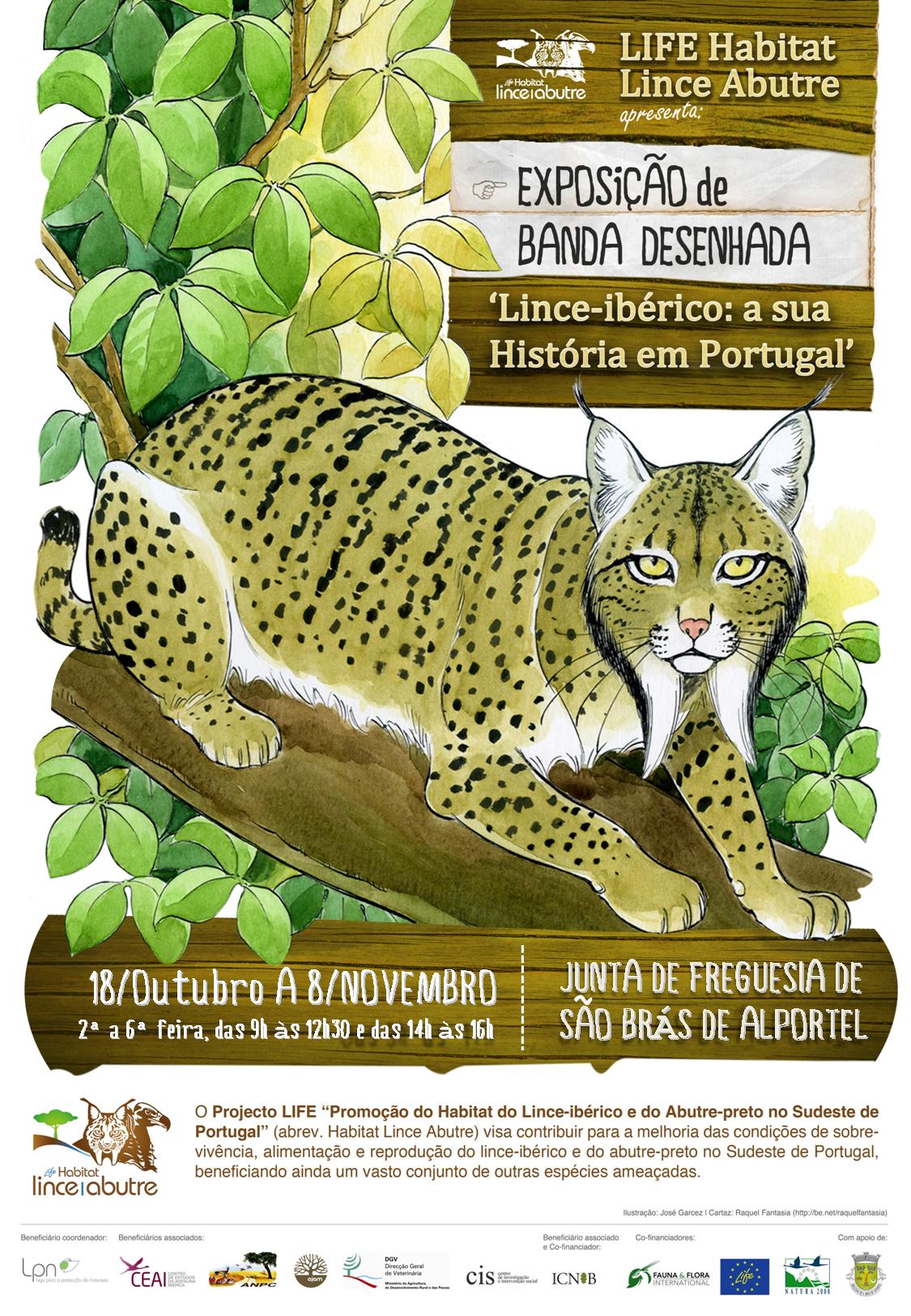Every time we encounter elderly inhabitants of the Caldeirão Mountain, we ask if it still remembers seeing the Iberian lynx… But they rarely recognize this name as corresponding to the elusive short tailed cat with stiff black hairs in the tip of the ears... the Iberian lynx is here known by the name of gato-cravo or liberne! Times have changed, its main prey, the wild rabbit, diminished drastically in the region and the gato-cravo was never seen again. Who knows him today as ‘Iberian lynx’ never had the opportunity to watch him in the wild…
To remember this flagship species and aware the local community for the need for its habitat conservation, Habitat Lince Abutre LIFE project, with the help of the civil parish of São Brás de Alportel, promotes an exposition of the comics ‘Iberian lynx: its history in Portugal’, that will be in exhibition at the civil parish of São Brás de Alportel from October 18 until November 8.
The exposition will be opened on the same day that the project will be giving an awareness session to local and regional stakeholders that can benefit from the project’s experience (e.g. hunters, farmers, foresters, workers of local development and environmental associations), and will be closed with another session, this time addressed to the whole population, on November 8.
If you still haven’t had the chance to visit this exposition or intend to revisit it, don’t let this opportunity skip away!

The comics ‘Iberian lynx: its history in Portugal’
With illustrations of one of the most notable Portuguese comics’ authors, José dos Santos Garcês, and script of the biologist Bruno Pinto, this book leads us through a lecture given by a biologist that talks to his audience about the Iberian lynx and its history, since the Middle Ages to the present day, with some passages in Portugal and Spain as well.
The main goal of this book, edited under the scope of the Project, is to inform and aware youngsters and adults about the Iberian lynx and the need for its conservation.